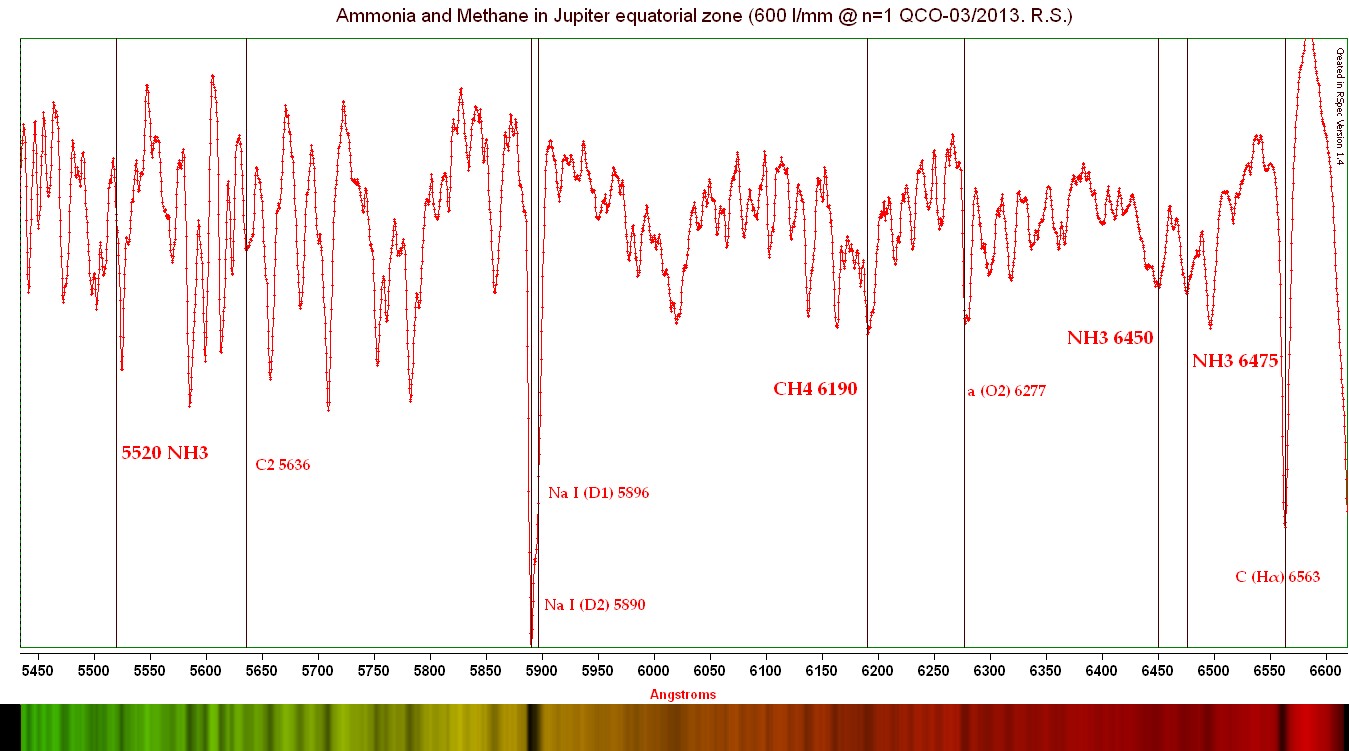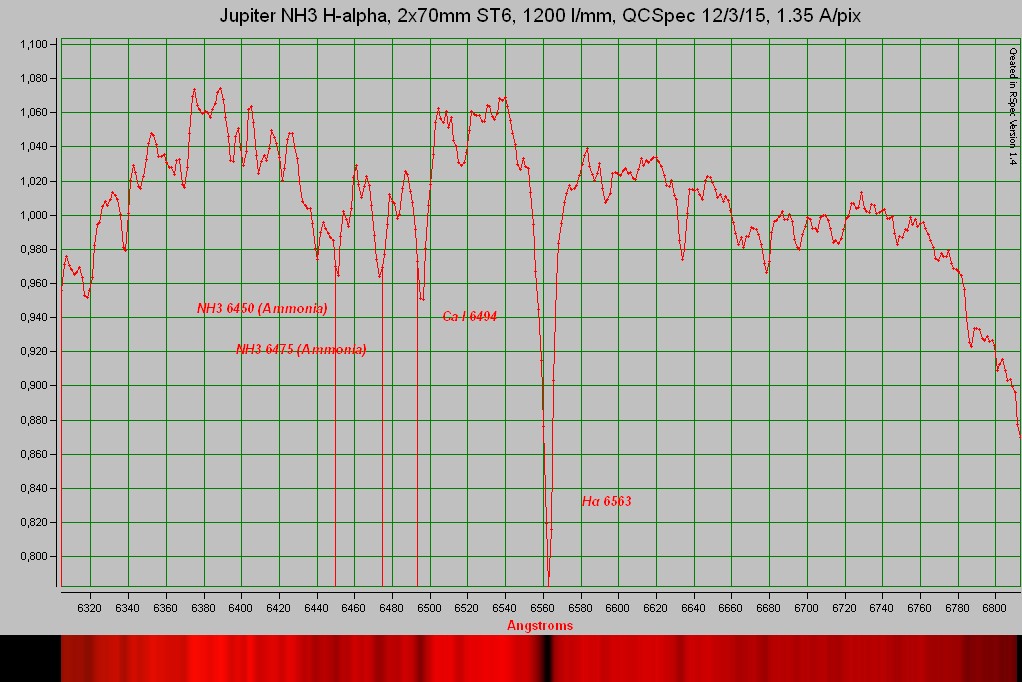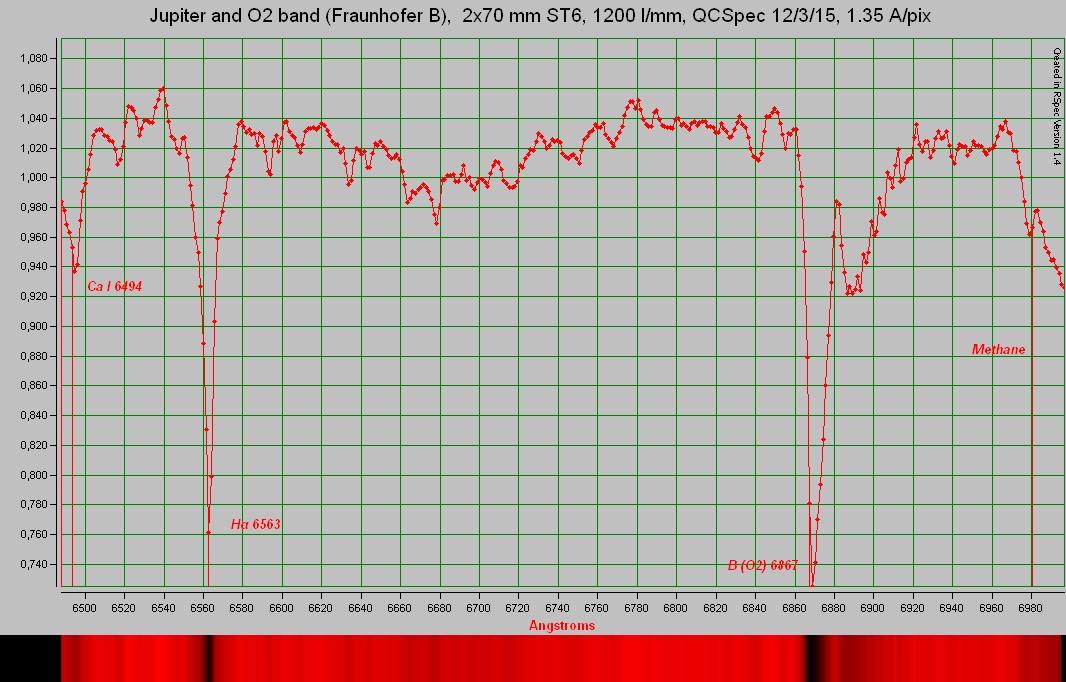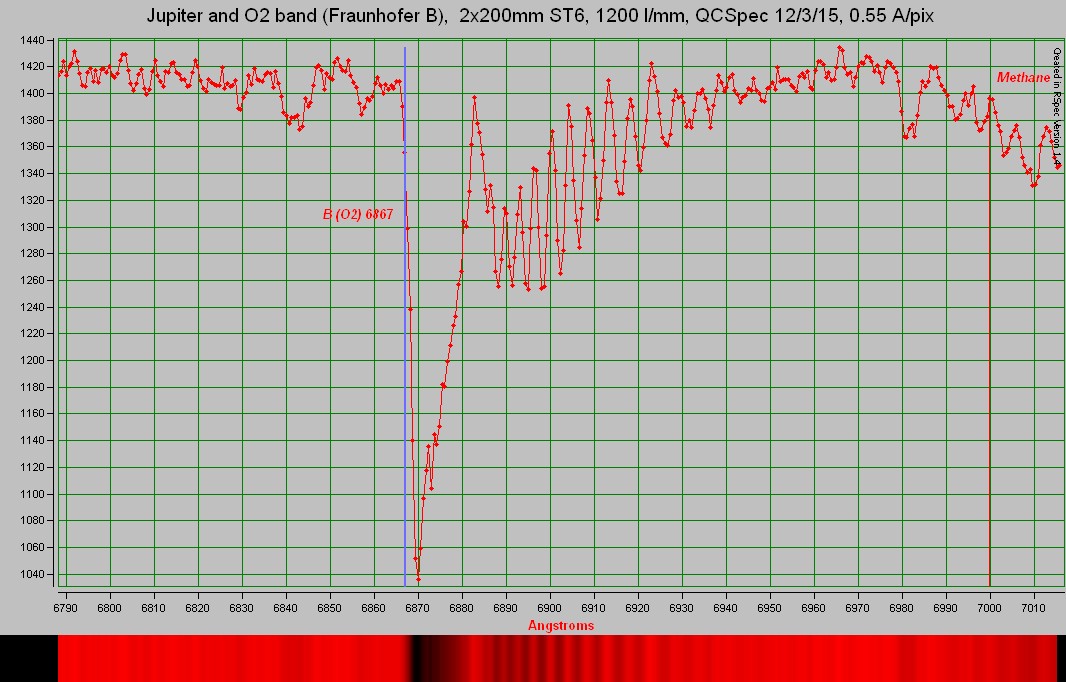All in one spectrum:
Methane and Ammonia on Jupiter and Oxygen on the Earth.
An extented Jovian spectrum is shown below using the 600 mm/l grating:
 Ammonia and Methane (NH3 and CH4) in Jupiters atmosphere is seen as molecular absorption bands. Most of the spectral lines are just reflected sunlight, and the sodium line (Fraunhofer D1 and D2 are pronounced). Home made QCSPEC with the 600 l/mm reflective grating, narrow slit, and a Canon 450D camera, 10 inch f/6 Newtonian. March 2013.
Ammonia and Methane (NH3 and CH4) in Jupiters atmosphere is seen as molecular absorption bands. Most of the spectral lines are just reflected sunlight, and the sodium line (Fraunhofer D1 and D2 are pronounced). Home made QCSPEC with the 600 l/mm reflective grating, narrow slit, and a Canon 450D camera, 10 inch f/6 Newtonian. March 2013. The following spectra were obtained with the ST6, with 1200 l/mm grating, 10 inch f/6 Newtonian. March 2015. A number of 20 second exposures (about 10 of them) were added for each spectrum.
 Closeup of the two Ammonium (NH3) lines. These are narrow, unresoved P and R molecular bands. Compare these to the resolved Telluric O2 bands.
Closeup of the two Ammonium (NH3) lines. These are narrow, unresoved P and R molecular bands. Compare these to the resolved Telluric O2 bands.  Hydrogen alpha to telluric O2, to a Jovian Methane band. The O2 band is from Oxygen in the Earths atmosphere. The light is first reflected from Jupiter, and then scattered or adsorbed by O2 in the Earths atmosphere.
Hydrogen alpha to telluric O2, to a Jovian Methane band. The O2 band is from Oxygen in the Earths atmosphere. The light is first reflected from Jupiter, and then scattered or adsorbed by O2 in the Earths atmosphere.
.jpg)
.jpg)
The rotational Doppler shift of Jupiter is seen in the Hydrogen alpha line, but not in the Telluric line (as expected) as the Earths atmosphere is (almost) not moving relative to us, while Jupiters rotation of roughly 10 km/s gives a clear slanting of the line. Three diffrent 20 second exposures are shown. The line is redshifted on the receeding limb and blueshifted on the approaching limb of Jupiter. The spectrograph slit was placed along the equator to obtain maximum Doppler shifts. A closer look ot the Doppler shift is found in a separate section here .
 Closeup of the O2 band. A detailed analysis of the P and R branches is here, with comparison to modelled spectra.
Closeup of the O2 band. A detailed analysis of the P and R branches is here, with comparison to modelled spectra.